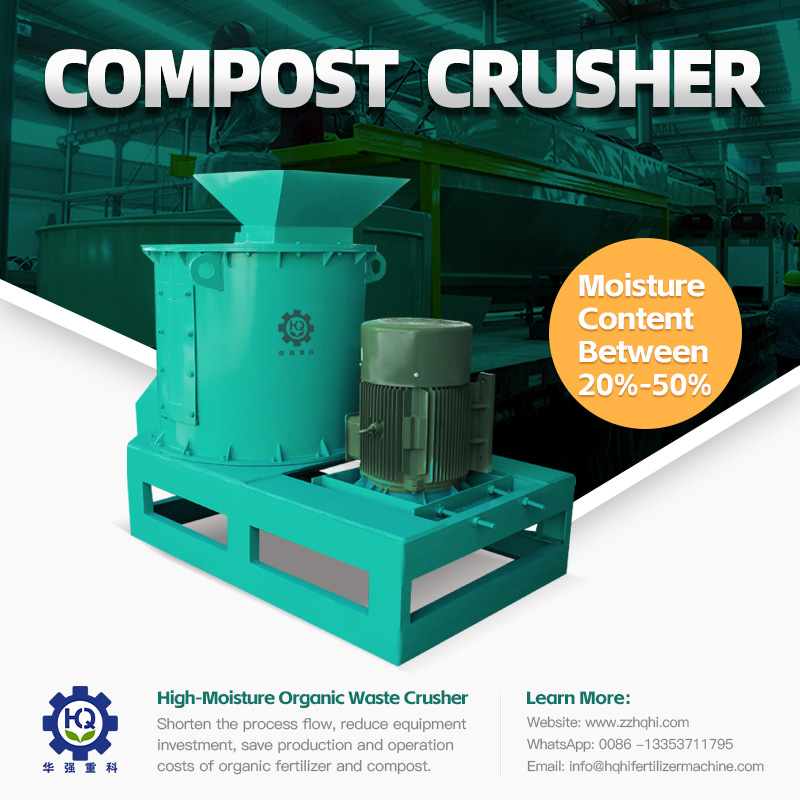The fertilizer crusher is a key piece of equipment in an organic fertilizer production line. Its main job is to grind fermented organic materials (like livestock manure, crop stalks, and mushroom residue) into an even, fine powder. This ensures stability in later steps like granulation or packaging. How well it breaks down the material directly affects the quality of the final fertilizer and the production efficiency.
How It Works
1.Feeding and Initial Crushing
Material is fed into the hopper, either by conveyor belt or manually. High-speed rotating blades or hammers cut and break down large chunks into smaller pieces.
2.Fine Grinding
Inside the crushing chamber, the material gets hit repeatedly by hammers, teeth, or screens. It also gets rubbed and sheared. This breaks it down gradually into tiny particles (usually 1-5mm).
3.Screening and Discharge
Particles small enough to pass through the screen at the bottom are discharged. Material that’s still too coarse stays in the chamber for more grinding, ensuring a uniform final product size.

Operating Guidelines
1.Before Starting
Make sure the power voltage is stable and all bolts are tight. Check the crushing chamber is clear of hard objects (like stones or metal) to avoid damaging the blades.
2.During Operation
Feed evenly: Avoid overloading the machine, which can cause blockages or motor overload.
Moisture control: Keep raw material moisture content ≤30%. Wet material tends to stick to the screen.
3.Maintenance and Care
Lubricate bearings regularly.
Replace worn blades/hammers (generally check every 300 hours). Clean the screen after stopping to prevent corrosion and clogging.
In short, the fertilizer crusher is vital for improving fertilizer quality. Using it correctly extends the machine’s life and guarantees efficient grinding.